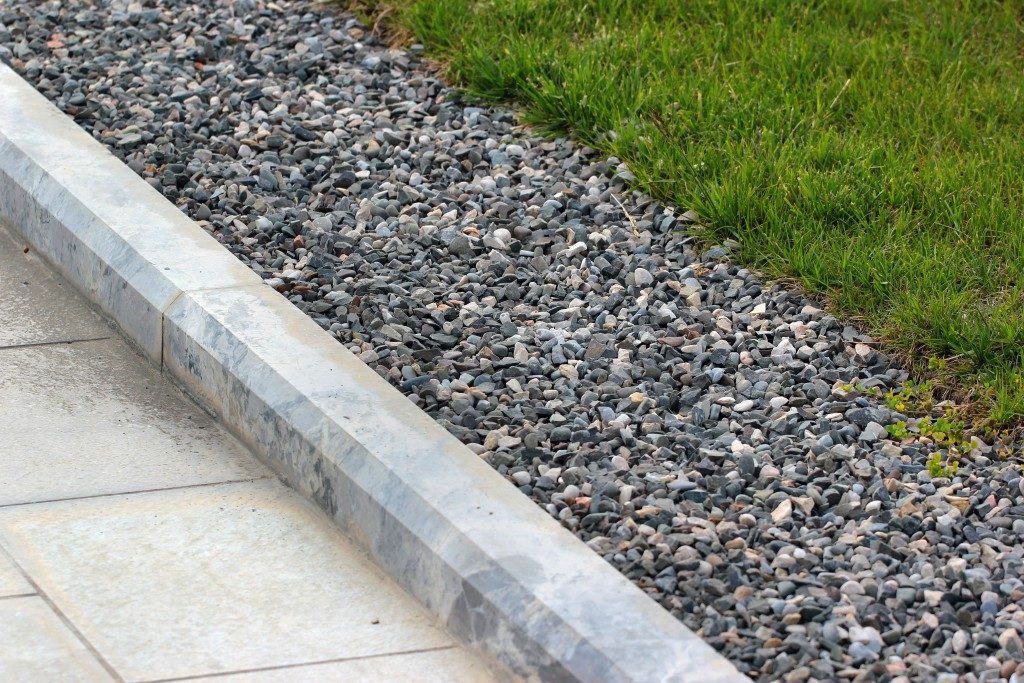Landscaping covers two subcategories that can enhance your outdoor space: hardscape and softscape. Hardscape consists of the nonliving elements in your landscape, whereas softscape is all the horticultural “living” elements found in your garden.
Both can elevate the look of your yard. But if you’re looking to add texture and shapes as well as improve its function, hardscaping is a good choice to redoing your backyard.
Beauty and Function for Your Yard
Hardscaping not only makes your yard stand out, but it also improves the overall function of your outdoor space. Retaining walls, stone stairs or paths help level off sloping or uneven land. They also help minimize runoff in areas that get easily flooded with water. By absorbing heat from the sun, materials like stone, rock, and concrete helps dry the soil around it. This prevents standing water, over-watering, algae and mildew, as well as unwanted pests.
One way to combine beauty and function through hardscaping is adding an outdoor fireplace. An outdoor fireplace will allow you to enjoy cooler evenings on your patio. You can ask a Utah landscaping service to deliver palletized rocks suitable for this outdoor feature. Your options may include flagstone, granite, and river rock.
The Rocks Best Used in Hardscaping
Whether for drainage or for decoration, identifying the right rock for your desired design is important. There are seven types of stones landscapers use in hardscaping, namely:
- Decorative Gravel
- Sandstone
- Granite
- Slate
- Flagstone
- Limestone
- Thin Veneer Stone
Decorative Gravel
Gravel is one of the more popular and inexpensive stones used in outdoor design. It comes in different shapes and sizes. In your garden, you can spread gravel in between other larger stones or across wider areas all by itself. When you place it on your driveway, the gravel should be angularly shaped to bear the weight of any vehicle. Other types of gravel, namely river rocks, fit best in a water setting.
Sandstone
Sandstone is a popular choice for hardscaping because it’s durable. It remains whole and unweathered despite constant exposure to the elements in your backyard. It comes in a variety of colors and is very easy to maintain. Sandstone is soft and breakable into thin slabs, so it works best on gardens with unusual sizes and stairs.
Granite
Granite withstands very high temperatures, so it’s an excellent choice for backyard fire pits. Despite this, granite is hard so it could be tough to work with.

Slate
Slate stones break easily into thinner pieces and is suitable for paving stone. It also works well as indoor stone tiles if you’d like a more formal type of flooring. It comes in different textures and colors, allowing you to be creative in where you’d want to place them. But slates are susceptible to water damage and cost more than other hardscaping stones.
Flagstone
Flagstone is a natural rock cut into thin, flat slabs. It’s mostly ideal for pathways, pavers, and in patios, and can fit into different designs and styles. Placing pavers can be a fairly simple project to do on your own, provided you construct a permanent border to prevent the shifting and sliding of the slates.
Limestone
Limestone is a colorful rock, ranging from varieties of white, red, and black. It works well as a stone wall, as flooring on patios and on walking paths. Limestone can withstand extreme weather and last long even as an outdoor ornament.
Thin Veneer Stone
Veneer stone comes in various shapes, sizes and colors. It’s ideal in decorative places where using full, heavy stone can be impractical.
Hardscaping can enhance your backyard. Whether you intend to build a fire pit or add a walkway leading to your patio, you can add beauty and improve the function of your outdoor space.


